
Understanding Cost Value Reconciliation in Construction
In construction, keeping track of expenses is vital. Cost Value Reconciliation (CVR) is a crucial tool used by construction experts to assess how a project is doing financially. It helps project managers spot differences between the expected costs and the actual ones, making it easier to make smart decisions. In this blog post, we’ll break down CVR, examine its key parts, discuss why it matters in construction, and explore its advantages.

In construction, managing costs is a crucial aspect of every project. Cost Value Reconciliation (CVR) is an essential tool used by construction professionals to assess the financial performance of a project. It helps project managers identify discrepancies between the estimated and actual costs and allows for informed decision-making. This blog post will delve into Cost Value Reconciliation, explore its key components, discuss its significance in the construction industry, and highlight its key benefits.
What is Cost Value Reconciliation?
Cost Value Reconciliation (CVR) is a fundamental process used in the construction industry to assess the financial performance of a project. It thoroughly compares the actual cost incurred during the construction process and the initial estimated cost. The primary goal of CVR is to identify and understand the variances between the estimated and actual costs, providing stakeholders with valuable insights into the project’s financial health.
Project managers and other stakeholders can understand how the project’s costs align with the initial estimates by conducting CVR. This process helps evaluate the accuracy of cost projections, identify any deviations or discrepancies, and pinpoint areas that require further attention. Through this analysis, stakeholders can assess the overall financial health of the project and make informed decisions regarding its progress.
Components of Cost Value Reconciliation
To effectively understand CVR in construction projects, it is important to investigate its key components. Understanding these components sets the foundation for successful CVR implementation.
1. Estimated Cost: The estimated cost is the initial budget allocated to a construction project before its commencement. It includes various components such as materials, labour, equipment, permits, and overhead costs. Accurate estimation is crucial for effective project planning and management. By estimating costs based on historical data, market conditions, and expert knowledge, project managers can establish a baseline for comparison.
2. Actual Cost: The actual cost represents the actual expenditure incurred during construction. It includes direct costs, such as material and labour costs, and indirect costs, such as administrative expenses and overhead. Tracking and documenting the actual costs accurately is vital for cost control and project success. Accurate record-keeping allows project managers to evaluate project expenses in detail.
3. Variance Analysis: Variance analysis is a critical component of CVR. It involves comparing the estimated and actual costs and calculating the variance. Positive variances indicate cost savings, while negative variances indicate cost overruns. By analysing these variances, project managers can identify potential issues, assess their impact on the project, and develop strategies for cost optimisation. Regular variance analysis helps in the early identification of cost discrepancies and enables proactive decision-making.
The Significance of Cost Value Reconciliation in Construction
CVR is important in the construction industry, providing project managers and stakeholders with invaluable insights into a project’s financial performance. It enables effective cost control, performance evaluation, informed decision-making, and continuous improvement by comparing estimated and actual costs. Let’s explore each of these aspects in detail.
1. Cost Control: CVR gives project managers an accurate and comprehensive overview of a project’s financial performance. Comparing estimated and actual costs allows them to identify cost overruns early on and take necessary measures to control expenses. This helps avoid budget overruns and ensures the project stays on track financially. Effective cost control contributes to the financial stability of the construction company and enhances its reputation.
2. Cash Flow Management: Maintaining positive cash flow is crucial in construction projects. CVR helps in predicting future cash flow needs based on project progress and cost performance, allowing companies to manage cash flow more effectively and avoid financial stress.
3. Profitability Analysis: CVR provides insights into the profitability of construction projects. By comparing the earned value (the value of work completed) with actual costs incurred, companies can determine if a project is on track to meet profit targets or if adjustments are needed.
4. Performance Evaluation: CVR serves as a valuable tool for evaluating the performance of contractors, subcontractors, and suppliers. Project managers can assess their accuracy and reliability by comparing their estimates with the actual costs. This evaluation helps make informed decisions about future partnerships and ensures accountability among project stakeholders. By working with reliable and cost-effective vendors, construction projects can achieve higher efficiency and quality outcomes.
5. Decision-making: Understanding the cost variances through CVR enables project managers to make data-driven decisions. It provides insights into the efficiency of various processes, highlights areas where adjustments are required, and helps prioritise resource allocation. With this information, project managers can optimise project execution and enhance overall performance. Informed decision-making based on CVR analysis reduces the risks associated with cost uncertainties.
6. Continuous Improvement: CVR is not a one-time process but a continuous effort throughout the construction project. By monitoring and analysing cost variances, project teams can identify patterns, learn from past experiences, and implement corrective actions to improve cost estimation accuracy in future projects. This iterative approach leads to continuous improvement in cost management practices. Regular review and refinement of estimation techniques contribute to enhanced project planning and budgeting.
7. Client Transparency: CVR provides clients with transparency regarding project costs and progress. This builds trust and confidence with clients, which can lead to repeat business and referrals.
Key Benefits of Cost Value Reconciliation
CVR offers key benefits such as improved cost control, enhanced project performance, informed decision-making, and opportunities for continuous improvement. By leveraging these benefits, construction professionals can optimise their cost management efforts, achieve better project outcomes, and maintain financial stability throughout the project lifecycle.
To delve deeper into the benefits of CVR, we encourage you to read our whitepaper titled “Six Key Benefits of Cost Value Reconciliation in Construction.” This whitepaper explores these benefits in more detail, providing practical insights into how CVR can positively impact construction projects.
Conclusion
Cost Value Reconciliation is vital in the construction industry, providing project managers with valuable insights into cost performance. By comparing estimated and actual costs, stakeholders can control expenses, evaluate performance, make informed decisions, and foster continuous improvement. While the benefits of CVR are numerous, it is essential to recognise that its successful implementation requires attention to detail, accurate data collection, and effective communication among project team members. By incorporating CVR into construction projects, professionals can ensure financial success and optimise the efficiency of their operations.
Ready to take your construction projects to the next level?
Download our whitepaper on Cost Value Reconciliation today. Discover how CVR can empower your project management with invaluable cost insights, helping you control expenses, enhance decision-making, and drive continuous improvement. Ensure your construction projects are financially sound and efficient by harnessing the power of CVR. Don’t miss out – grab your whitepaper now and unlock the secrets to success in the construction industry!
-
Share:

Elliot Herdman | Elliot has over 20 years experience in the construction industry working with main contractors, subcontractors, M&E, supply and install analysing their business processes and implementing digital software solutions to improve projects, drive efficiencies and meet the growing needs of clients.
